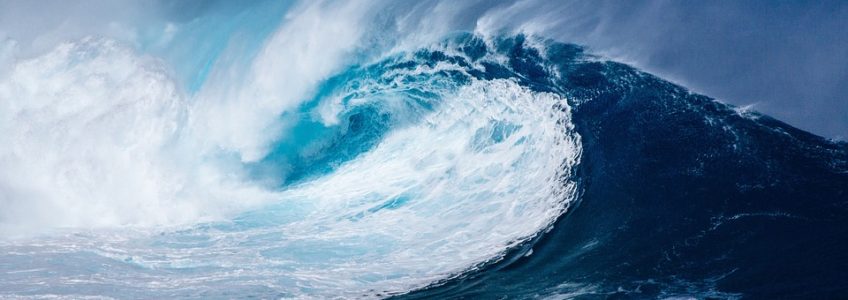Tsunamis are often caused by earthquakes, but for a lot of people, the knowledge stops there. Today, we want to dig a little deeper into the earth’s crust to share a few more facts, for those of you who are curious.
First off, we want to share that not all tsunamis are caused by earthquakes. Sometimes, they’re caused by landslides on the sea floor, land slumping into the ocean, major volcanic eruptions or large meteorite impacts. But by far, the most far-reaching tsunamis are caused by earthquakes that are shallow and wide, with an epicentre on (or near) the ocean floor.
Subduction zones along tectonic plate boundaries—such as we have along the Cascadia fault line separating the Juan de Fuca and North American plates—are potential tsunami locations. In fact, because they’re locations where an oceanic plate is being forced down into the mantle causing incredible friction, they’re where most earthquakes and tsunamis occur.
FACT: 90% of the world’s earthquakes occur along the Pacific Ring of Fire, and that’s why tsunamis happen most frequently in the Pacific Ocean.
For those of us living on waterfront in Victoria, it’s not the most heart-warming information to consider, but nonetheless it’s helpful to be aware. Some people from regions where earthquakes are rare can’t even imagine living somewhere like here. The idea of living in an earthquake or tsunami zone is heart-chilling!
And while many of us are so used to the idea that we hardly think of it, it’s good to remind ourselves of the reality every once in a while and consider the implications and make game plans.
That’s exactly what our government is starting to do. On March 28, CTV news reported that obsolete tsunami sirens are being replaced on Vancouver Island’s west coast. This will mean a more trustworthy alert for people living in Port Renfrew and the Pacheedaht First Nation territory. The BC Disaster Mitigation Program is providing $550,000 to install this new, state-of-the-art warning system, and it’s said to be able to provide early enough warning to allow residents time to head to higher ground.
As our Island community and government takes action to be better prepared for earthquakes and tsunamis in our region, it’s a healthy reminder for us as individual citizens to take responsibility for our own households.
-Content created by Sophie Wooding – Writer, gardener, cyclist and emergency preparedness enthusiast!

